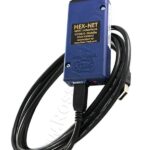Choosing the right tune for your Audi 3.0T engine can significantly impact performance. This guide delves into various tuning options, focusing on data logging with VCDS and popular tuners like APR, providing insights for informed decision-making. Understanding how these tunes modify engine parameters is crucial for maximizing performance and ensuring engine longevity.
Decoding Engine Tuning: Piggybacks vs. Flashes
The 3.0T engine, utilized across various Audi platforms, responds well to tuning. Two primary methods exist: piggyback systems and ECU flashes.
Piggyback systems (e.g., MTM, ABT) intercept sensor signals, modifying them to manipulate ECU readings for boost, air/fuel ratio, and timing. However, these have proven largely ineffective on the 3.0T’s sophisticated ECU.
ECU flashes (e.g., APR, GIAC, Revo) directly modify the ECU’s internal maps, optimizing parameters like timing, air/fuel ratios, boost, throttle control, duty cycles, and even cam timing. This allows for more precise and effective performance gains.
Evolution of ECU Flashing: OBD Port Access
Initially, ECU flashing required physical removal and shipping. Technological advancements now enable flashing through the OBD port, simplifying the process. While some prefer the traditional method for perceived safety, OBD flashing offers convenience.
Key Players in 3.0T Tuning: APR, GIAC, Revo
APR, a long-standing player, pioneered successful 3.0T tuning, earning significant market share. Their diverse octane-specific tunes (91, 93, 100, 104) and switchable programming via cruise control offer flexibility. APR’s consistent performance dominance, evidenced by top quarter-mile times, solidifies their reputation.
GIAC, another established tuner, delivers performance comparable to APR, with quarter-mile times closely matching. While they offer a DSG tune for enhanced RPM utilization, its value remains debatable. Choosing between APR and GIAC often boils down to personal preference and tuner availability.
Revo, more prominent in Europe, initially faced challenges due to a rushed release leading to engine issues. Subsequent revisions have addressed these concerns, resulting in a safer and more performant tune.
Understanding Tuning Modifications: Key Parameters
Tuners primarily adjust the following parameters:
-
Boost Levels: Stock boost is often bled off at higher RPMs. Tunes optimize boost delivery across the RPM range, maximizing power output. Pulley upgrades can further enhance low-end boost.
-
Timing: Optimizing ignition timing enhances combustion efficiency, increasing power. However, excessive timing can lead to detonation and engine damage. Reputable tuners prioritize safety, employing conservative timing adjustments.
-
Cam Timing: While the extent of cam timing modification on 3.0T engines remains unclear, adjustments can optimize valve timing for improved performance.
-
RPM Limit/Redline: Raising the RPM limit allows the engine to operate at higher RPMs, extending the power band. However, DSG tunes are often required to fully utilize this on DSG-equipped vehicles.
-
Air/Fuel Ratios (A/F): Tunes often lean out the A/F mixture slightly, increasing power and potentially improving fuel economy. Direct injection allows for leaner mixtures while maintaining safe combustion.
-
Duty Cycles: Adjustments to cooling fan and pump duty cycles ensure optimal operating temperatures under increased performance demands.
B8 vs. B8.5: Tuning Considerations
Differences exist between the B8 (2010-2012) and B8.5 (2013+) 3.0T platforms, impacting tuning strategies. Furthermore, subtle variations between 2013 and 2014 models require specific tuning adjustments.
Utilizing VCDS for Data Logging: Monitoring Performance
VCDS (Vag-Com Diagnostic System) plays a crucial role in monitoring tuning effectiveness and engine health. Logging critical parameters like boost, timing, and A/F ratios provides insights into performance and potential issues. Analyzing these logs helps ensure the tune is operating as intended and the engine is functioning within safe parameters.
Conclusion: Informed Tuning Decisions with VCDS Data Logging
Selecting the right tune for your 3.0T requires careful consideration of various factors, including tuner reputation, performance goals, and engine platform. VCDS data logging empowers informed decision-making by providing objective performance data, allowing for fine-tuning and ensuring engine longevity. Prioritize reputable tuners like APR and GIAC, known for their proven results and commitment to safe and reliable performance enhancements.


